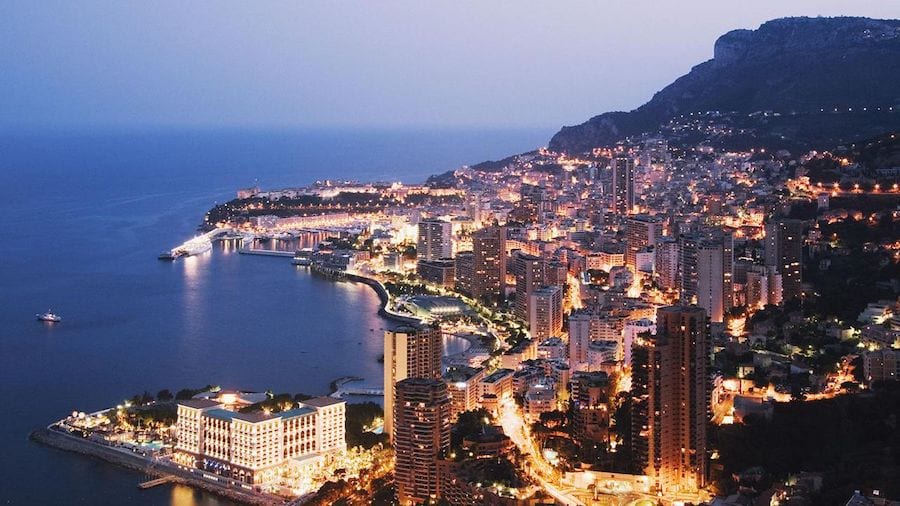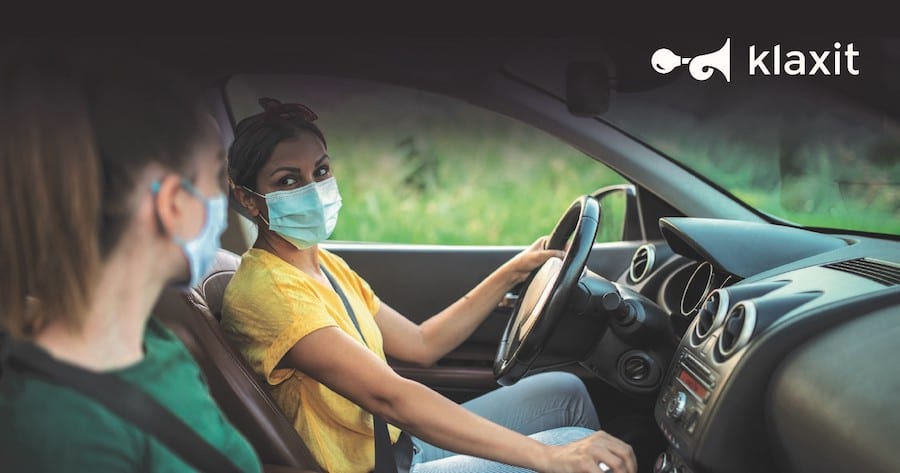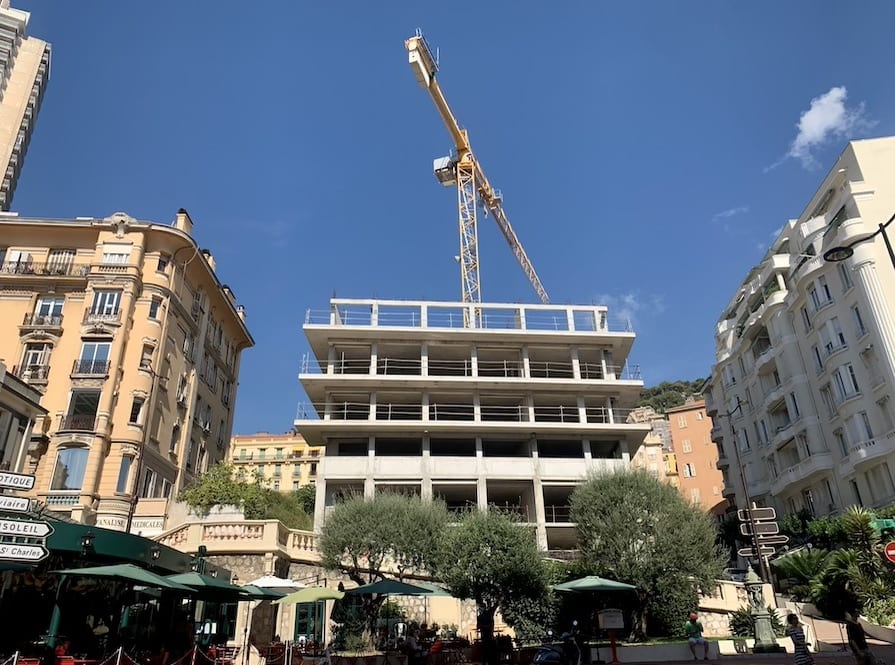It’s been one year since we caught up with Georges Gambarini to talk about Monaco’s roadmap to becoming a Smart City.
In this interview, the programme manager shares with us the impact that Covid had on Monaco’s digital strategy and whether it derailed any projects. We also look at what 2021 holds for the ambitious Smart City plan.
Monaco Life: When we first spoke in January 2020, you outlined some bold plans that the government had for the year ahead in Monaco. Then Covid hit. So how successful were those plans?
Georges Gambarini: Thanks to the government’s consistency, we achieved almost 80% of our objectives last year. In fact, our roadmap grew out of the situation we were in.
Some projects were postponed because of confinement, such as experiments in the city, but we’ve picked them up again and they are still ongoing.
Let’s start with transport. What advances have been made in this area?
We are still experimenting with light synchronisation for No. 5 buses on Boulevard Princesse Charlotte. The ‘smart’ lights detect an approaching bus and give a green signal, allowing the bus to pass through and complete its route faster, improving the quality of service. Our aim is to create a modern public transport system and encourage as many people as possible to take the bus. We think they would do that if the service was faster than it is today.
But it is a complicated experiment, because if you give a green light to the bus, you have to give a red light to everybody else, so it has a ‘butterfly effect’ and we must analyse that. Our aim is to deploy the system in 2021/2022 and perhaps go wider and apply it to all the buses, police cars, taxis, etc.
One of the most ambitious projects of the year was the launch of carpooling in Monaco. We work with Klaxit, one of the best providers in France, and focus on home-to-business and business-to-home. In order for this to work, we needed a community of a minimum size, so we went to the 24biggest companies in Monaco and said: “We will cover the deployment costs, we just need you to help us bring your employees on board”. Everyone was very motivated and we launched the programme in September.
How does it work?
You either nominate yourself as a driver or a passenger, and identify what days and times you are available or need to travel.
The first 30 kilometres are paid for by the government – that’s equal to travelling from Nice West to Monaco, for example – and for the passenger it is free.
It’s been a great success despite the complicated period in which we chose to launch the initiative. Again, the consistency of the government was important because it would have been easy to say it is too complicated and we should wait until 2021 for the rollout. But we achieved 900 journeys in December and, when compared with other cities using Klaxit, we are in the top tier.
There are 50,000 cars entering Monaco each day and we hope this initiative will help reduce both carbon and traffic. This year we are aiming to get more employees onboard.
City monitoring is also a major focus of any Smart City programme. How did that go in 2020?
We deployed 20 censors in the city last year and have been testing them for six months now. We are able to count air quality, buses, pedestrians, cars; we are able to identify what type of vehicles are entering Monaco, and which car parking spaces have become available.
In the future, we will be able to see, for example, if someone parks in a disabled car space and doesn’t put the authorisation card in the window.
The cameras are not manned. The technology works through digital analysis – one picture is analysed every second.
Some projects have been postponed, but not for long. Those that would normally be finished in November/December will come to an end in February/March.
What digital initiative you are particularly proud of?
We launched the Your Monaco website and app in July to provide useful information about the city. There is everything on there from maps to find car parks and air quality levels, to travel times for motorists and easy-to-read editorials.
The objective was to create a collaborative website for the government to provide citizens with a very simple way of explaining what is happening in their city on a daily basis.
This year, we want to expand it to include more real time information – whether the lift I take every morning is working today, for example.
All of this information is available to us and we want to find the best way to inform people through only one hub of information.
Your Monaco is also linked to Twitter and is automatically updated with traffic information, including road accidents and closures. If you create an account on Your Monaco, you are also able to receive SMS traffic alerts, specific to your travel times. This is all available in French, English and Italian.
What changes can we expect with Your Monaco in 2021?
We want to relay more real time information through Your Monaco. We want to develop the SMS alert system for people to personalise the information they receive, whether it is traffic, culture, events, new initiatives, new online services etc.
And we want to streamline all the information portals so Your Monaco becomes the only hub of information for everyone.
You were also set to launch the Urban Report when we last spoke. How did this rollout go?
The sole purpose of the Urban Report, which is a downloadable app, is to listen to the people in the city. We wanted to create a simple way for people to communicate their concerns with the right government official with regards to construction noise, transport, or garbage, for example. We need people to help us better manage the city. The objective is to listen, answer and react.
How does it work exactly?
If you are reporting a noise problem related to building works, for example, your complaint will be directed to the correct person in the government who will be able to respond. If we have a number of noise complaints in that area, we can send people out to test, monitor and locate the problem. Then we can try to resolve the issue.
We always say Monaco is like one big family, and the aim of this application is to ease people’s frustration by being able to communicate with the government, with one click, one message, or one photo. Feedback is very important.
How is Smart City integrated into the National Pact for the Energy Transition?
We are about to launch a communication campaign about the Carbon Coach, which allows people to sign the National Pact online, provides tools for people to measure their carbon impact, and tips on how to reduce their carbon footprint. We call it Carbon Coach because the government will give advice on good practices and some challenges to help people reduce their carbon impact.
What can residents look forward to in terms of tech in 2021?
We will launch a new app called ‘Monapass’ by the end of the first quarter. Monapass will be an all-in-one and free ticketing application that allows residents and visitors to access different services via a single solution. In other words, in Monapass, users will able to buy their tickets and subscriptions in just few clicks, and use these tickets in place of multiple apps, cards, tickets, etc. They will also be able to receive information that is relevant to their interests and real time data.
We will start with three mobility services: CAM Buses, Monabike and street parking. Then, we will gradually add more services requiring tickets such as theatres, swimming pools and the stadium.
Related stories:
Interview: Georges Gambarini, Smart City Program Manager


